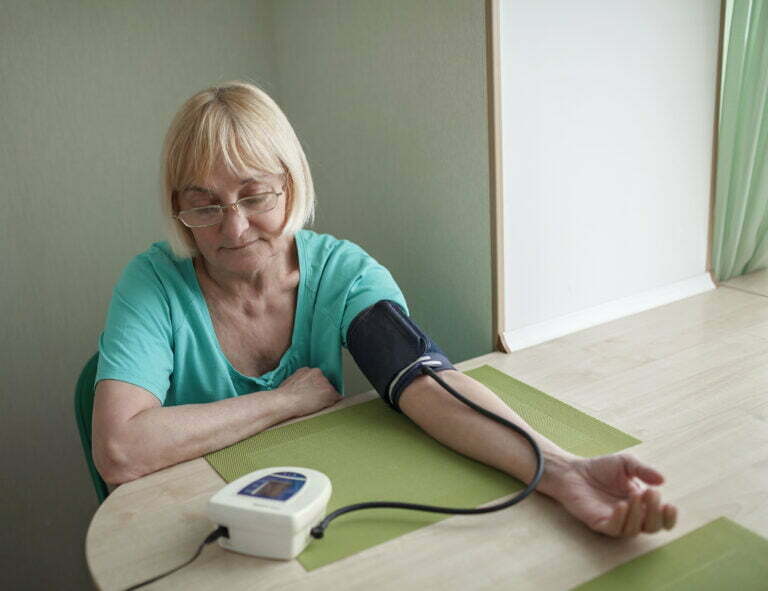In the landscape of modern healthcare, Remote Patient Monitoring (RPM) has emerged as a pivotal tool for providers striving to optimize patient care, particularly in the management of chronic diseases. Medicare Part B coverage for RPM services opens up avenues for healthcare professionals to harness physiological data, refine care plans, and minimize denied claims.
In this article, we delve into the intricacies of RPM billing, exploring CPT codes, best practices, billing requirements, device specifications, data collection methods, and revenue potential in 2024.
Understanding RPM CPT Codes in 2024
RPM CPT codes offer specific ways for medical providers to bill for different program activities, from setting up devices to providing ongoing care. Each code represents a distinct service with its own unique requirements and reimbursement rates.
Maximizing Reimbursement for Medical Providers
- CPT code 99457: This code covers 20 minutes of interactive communication per patient per month, earning an average reimbursement of $48.14.
- CPT code 99454: Boost your earnings by $46.50 per month when patients consistently use their RPM device daily. Remember, this code requires at least 16 readings within a 30-day period, not necessarily consecutive days.
Best Practices for Billing
- Device Setup (CPT code 99453): Bill this code only once per device, per patient, per month. If a patient receives multiple devices, each one gets billed in its respective month.
- Device Use (CPT code 99454): Bill this code monthly, regardless of the number of devices, but remember the 16 readings requirement within a 30-day window.
- Important Distinction: Codes 99457 and 99458 are based on calendar months, while 99454 follows 30-day periods. Align your claim submissions to optimize reimbursement.
Pro Tip: We recommend submitting all RPM-related claims together, aligned by calendar month, for smoother processing and maximum efficiency.
Please note: The reimbursement rates mentioned are based on national averages and may differ depending on your specific location and service. For the most current and accurate information, always consult the Physician Fee Schedule.
Optimizing Medical Providers’ Revenue Streams through RPM
Studies have shown promising results for RPM, particularly in managing chronic conditions like hypertension. Recognizing its value, payors are actively investing in RPM-like programs that align with value-based care models. This shift focuses on preventative measures and improved health outcomes, reducing overall healthcare costs.
The COVID-19 pandemic highlighted the effectiveness of RPM, demonstrating its ability to cost-effectively monitor and support patients with chronic illnesses remotely. As a result, physicians are increasingly embracing RPM, appreciating its ability to provide continuous insights into patient health, enabling them to proactively manage conditions and deliver better care.
Accessibility and Coverage:
The good news? Any patient covered by Medicare Part B is eligible to enroll in RPM, receiving 80% coverage for the program. Additionally, many secondary insurance plans cover the remaining 20%, making RPM an accessible and affordable option for most patients.
Billing Made Simple:
- RPM utilizes a monthly billing cycle, calculated from the first to the last day of each month. This simplifies the process for both providers and patients, ensuring clear and consistent billing practices.
- By understanding the benefits and billing basics of RPM, we can unlock its potential to transform chronic condition management and empower patients to actively participate in their own healthcare journey.
Who Can Provide and How to Bill
Eligible Medical Providers
While billing for remote patient monitoring requires supervision from a qualified healthcare professional with a National Provider Identifier (NPI) number, the good news is that much of the program administration can be handled by other skilled clinical staff, freeing up physicians’ time. Here’s who can be involved:
- Physicians: Physicians oversee the overall RPM program.
- Advanced practice providers: Physician assistants, nurse practitioners, and certified nurse midwives can play a significant role in managing and monitoring patients within the program.
- Other Qualified healthcare professionals: Clinical nurse specialists and pharmacists may also contribute to specific aspects of RPM programs under appropriate supervision.
Submitting Claims
Medicare claims for RPM services require specific information:
- CPT codes: These unique codes identify the specific RPM program(s) being provided for each patient.
- ICD-10 codes: Corresponding to the medical conditions being monitored within each program.
- Date of service: Clearly indicating when the service was rendered.
- Place of service: Specifying whether the service was delivered in-office, via telehealth, or another setting.
- National Provider Identifier (NPI): The unique identifier of the supervising healthcare professional.
Additionally, documenting the staff care coordinator assigned to each patient can prove helpful during potential audits.
Streamlining the Billing Process
To ensure smooth and accurate billing, follow these four steps:
- Verification: Every month, meticulously check that all CMS requirements are met for each patient and their respective devices.
- Monthly submission: Submit claims to CMS on a monthly basis to ensure timely reimbursement.
- Patient invoices: For patients receiving monthly RPM services, send clear and accurate invoices.
- Code conflict check: Double-check for any conflicting codes that might have been inadvertently billed, avoiding potential issues.
By understanding who can provide RPM services and following proper billing procedures, healthcare providers can leverage this valuable tool to enhance patient care while ensuring accurate and compliant reimbursement.
Remote Patient Monitoring Devices
RPM relies on a diverse range of FDA-approved medical devices to gather crucial health data from the comfort of your home. These devices, acting as your personal health assistants, can include:
- Weight scales: Keep track of your weight fluctuations.
- Blood pressure monitors: Monitor your blood pressure for heart health insights.
- Pulse oximeters: Measure your blood oxygen saturation.
- Glucometers: Track your blood sugar levels for diabetes management.
- Heart rate monitors: Monitor your heart rate for rhythm and activity tracking.
- Thermometers: Take your temperature to aid in illness detection.
- Spirometers: Assess your lung function for respiratory conditions.
Since RPM involves remote interactions, these devices are provided to you for self-use at home. They diligently collect daily readings, which are then securely transmitted electronically to your healthcare provider for analysis.
Remote Patient Monitoring Data
The data collected by these RPM devices paints a valuable picture of your health, often including:
- Weight: Track weight trends to understand overall health and manage chronic conditions.
- Blood pressure: Monitor for hypertension or hypotension and adjust medications accordingly.
- Blood glucose: Manage diabetes effectively by understanding blood sugar fluctuations.
- Heart rate: Identify potential arrhythmias or track fitness progress.
It’s crucial that this sensitive health data is collected and stored securely. Therefore, RPM programs utilize HIPAA-compliant resources, such as specialized care coordination software, to ensure the utmost privacy and protection of your information.
The Significance of RPM in Chronic Disease Management
RPM represents a paradigm shift in chronic disease management, empowering both providers and patients with actionable insights gleaned from real-time physiological data.
Empowering action with real-time data: Instead of relying solely on periodic appointments, RPM equips both patients and providers with live, continuous insights into health. Think daily blood sugar readings, weight measurements, or blood pressure checks – all transmitted remotely and securely. This empowers informed decision-making, allowing providers to:
- Adjust medications and care plans based on real-time trends.
- Identify potential issues early before they escalate into emergencies.
- Collaborate with patients on personalized management strategies.
DrKumo: Empowering Providers with RPM Solutions
Our cutting-edge technology goes beyond basic monitoring, offering a suite of solutions designed to:
- Streamline workflows: Say goodbye to tedious paperwork and administrative burdens. DrKumo’s intuitive interface simplifies patient enrollment, data collection, and billing, saving you valuable time and resources.
- Boost patient engagement: Empower your patients to become active participants in their health journey. DrKumo provides user-friendly tools and educational resources that keep patients motivated and engaged in their care plan.
- Maximize revenue potential: Unlock the full potential of RPM reimbursements with DrKumo’s intelligent coding and billing assistance. Ensure accurate claims submission and optimize your revenue cycle management.
- Scalability and flexibility: Our platform adapts to your specific needs, whether you’re a small practice just starting out or a large health system seeking enterprise-level solutions.
- Data-driven insights: Gain actionable insights from real-time patient data to personalize care plans, identify potential risks early, and improve overall health outcomes.
- Dedicated support: We’re here to support you every step of the way with dedicated customer service and training resources.
Key Takeaways
In conclusion, mastering RPM billing is indispensable for providers seeking to optimize revenue streams, enhance patient care, and navigate the evolving landscape of value-based healthcare. By embracing best practices, leveraging synergies with CCM, and harnessing innovative RPM solutions like DrKumo, providers can embark on a transformative journey towards sustainable healthcare delivery in the digital age.
Contact DrKumo today and discover how our innovative solutions can empower you to deliver exceptional care, engage your patients, and achieve long-term success.








